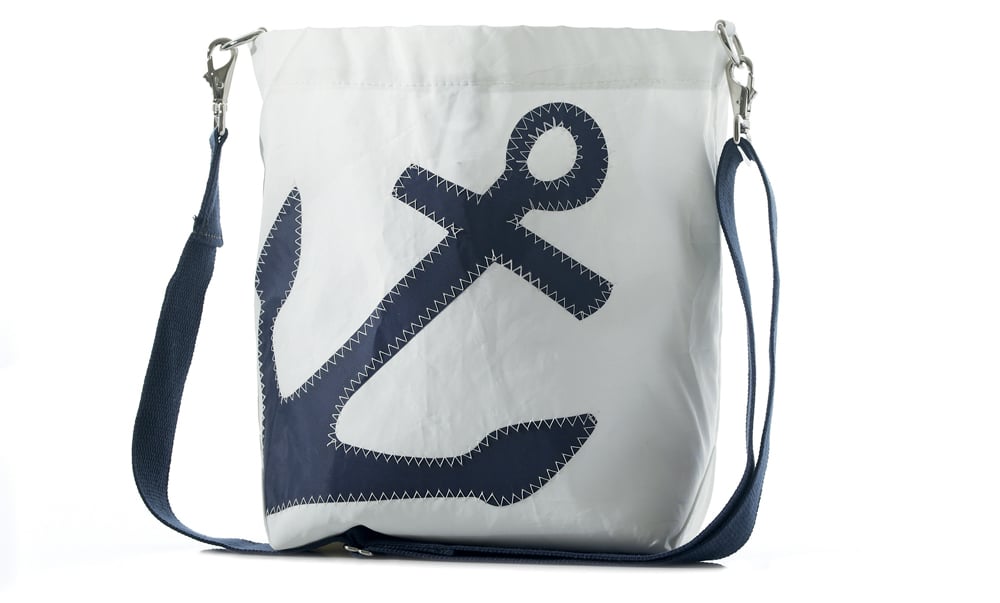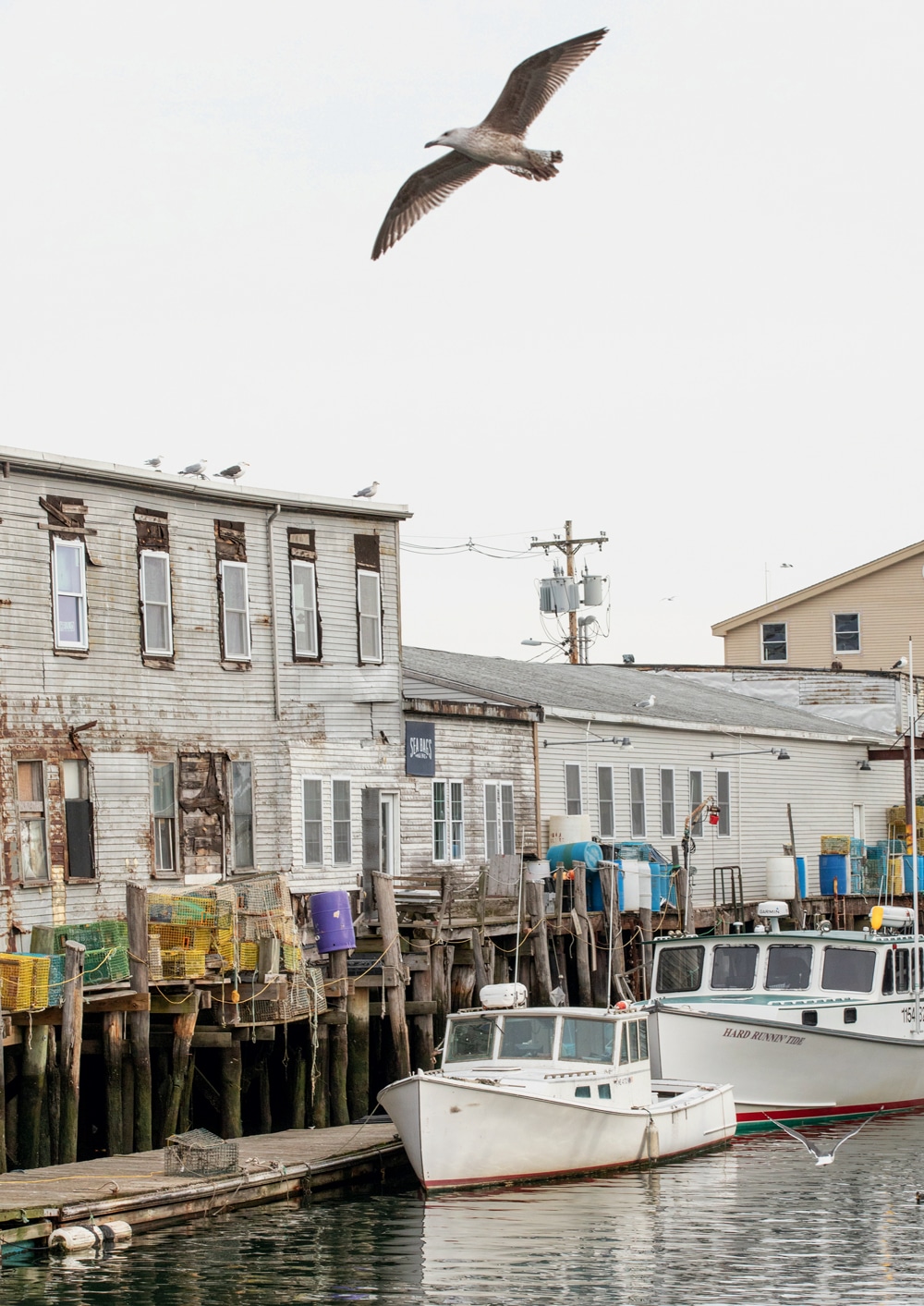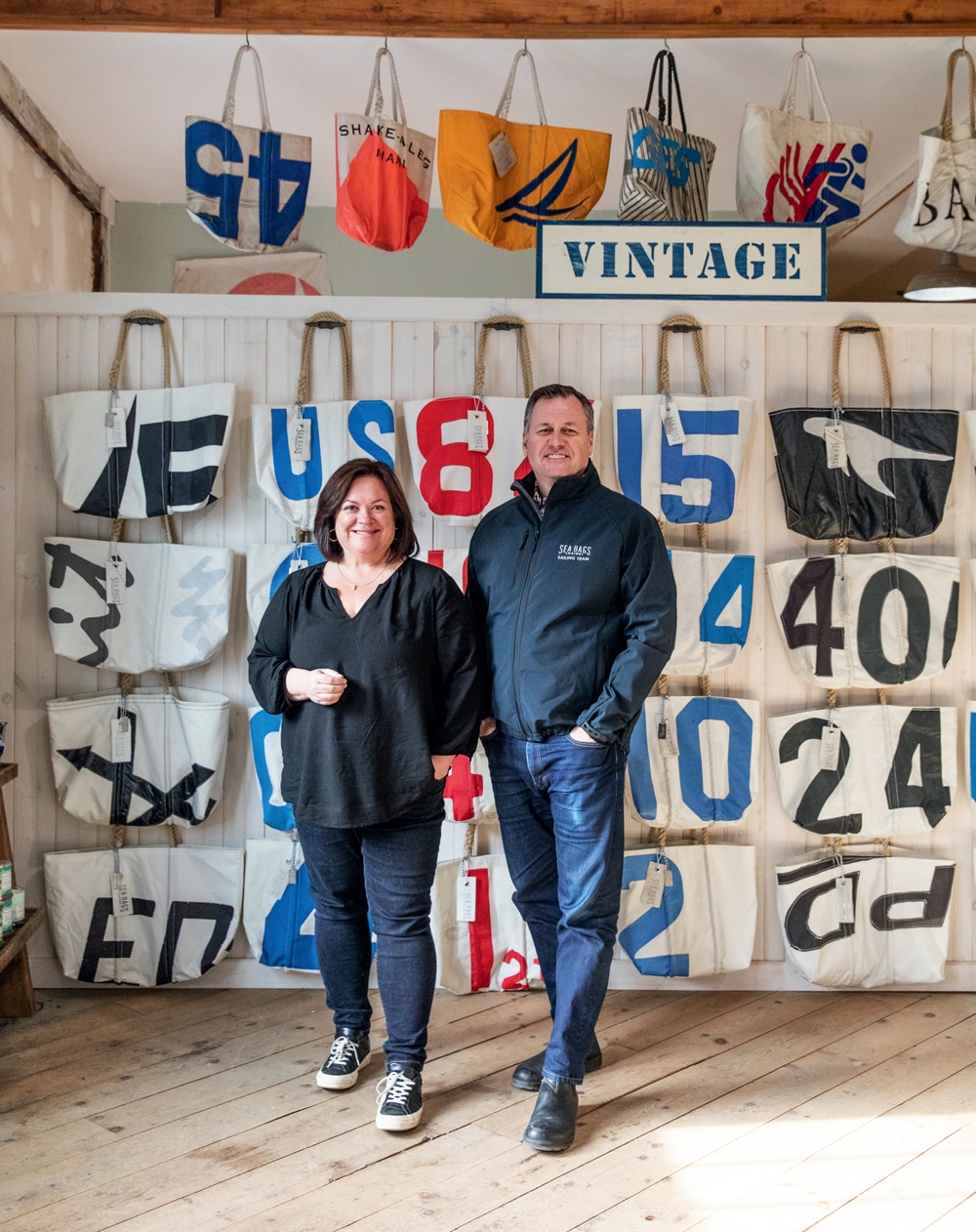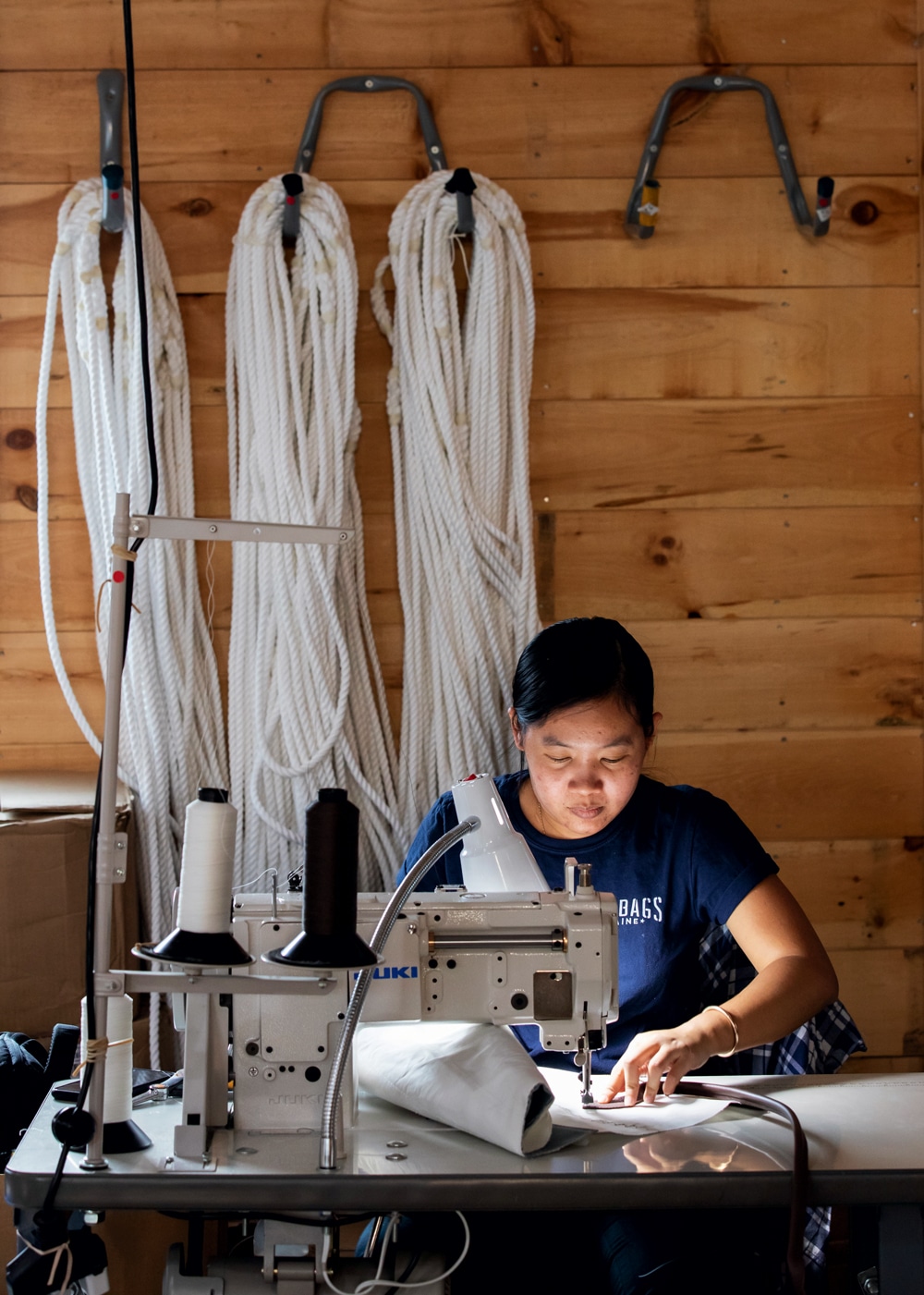Sea Bags in Portland, Maine | Every Bag Has a Story
On Portland’s working waterfront, Sea Bags makes waves with totes crafted from recycled sails.

Duck down an inconspicuous alley in the Old Port, and you’ll find yourself on Portland’s historic Custom House Wharf. Weather-beaten buildings lean into each other, and the sharp ocean air and occasional fishy smell put you on notice: You’ve stumbled onto a working waterfront, with lobster boats lashed to the back side of the pier and fishermen bringing in their catch.
The old wharf is home to a colorful mix of tightly packed neighbors. The Harbor Fish Market, a landmark since the 1800s, is like bait for photographers. The Porthole Restaurant & Pub has been a mainstay for 90 years. And then there’s Sea Bags.
The small, shingled storefront stands over the harbor on long, lanky piers. Step inside the 20-year-old enterprise, and you’re swept into a world of wind and water. Rugged totes line the walls of a 200-square-foot shop, sporting the insignias of sails that have traveled the world. A low-level clatter from the room next door draws my eye: Nineteen sewing machines whir away, transforming vintage and retired sails into high-end bags. Last year alone, Sea Bags kept 7,000-plus sails out of landfills, converting them into something handcrafted, beautiful, and Maine-made.

Photo Credit : Greta Rybus
“My dad was a Bath Iron Works guy,” says Beth Shissler, co-owner of Sea Bags, instantly cementing her Maine roots. She remembers the early days of the enterprise with her friend, Hannah Kubiak, who founded the business in 1999 but sold her share in 2013. Back then, Kubiak did all the sewing. “In a good year, she might have sold 45 bags,” says Shissler. When Shissler came on in 2006, she took care of everything else, putting her business background to good use. But from the start, she had a vision of what it could be.

Photo Credit : Greta Rybus
It’s easy to see why. Every sail has a story. And those stories, in the hands of skillful makers, are crafted into something both romantic and rugged (not to mention practical). Materials might come from dinghies or massive yachts, like the Athena. There are spinnakers, and mainsails, and sometimes a telltale attached (it looks like a tadpole). If you’re well-heeled, you could end up with a rare insignia or a vintage material like tanbark. Faced with walls of bags, each clamoring to tell its tale, some shoppers take hours to make a decision.
But it’s a major leap from those early days to the 160,000 handmade Sea Bags created last year. Staffers track down sails, cut them into panels, choose each piece and bring the design together (“kitters” sign their names inside), sew the bags and rope handles, and finally ship every last one of them from this wharf.

Photo Credit : Greta Rybus
It sounds, in fact, like Shissler’s early vision. “I knew it could be like this,” she says firmly. “But I didn’t have the skill set.” Enter Don Oakes, CEO, and another Mainer by way of L.L. Bean. He gestures around the bright, airy shop, with its view overlooking the lobster boats. “Up until 2013, everything happened in this room,” he says incredulously.
And it is hard to believe, after roaming the spacious quarters, including the adjacent sewing room, storeroom, and upstairs offices and workrooms. Because since 2013, business has tripled, now employing 140 people in 18 stores up and down the East Coast—all while staying true to the company’s handmade ethos, not to mention achieving next-level recycling. Try to imagine what 600 tons of reclaimed sails might look like—the amount Sea Bags has saved from landfills since its beginning. “Sustainability wasn’t really trendy back in 2003,” Oakes remarks. “But it’s our business. Without recycled sails, we have no business.”

Photo Credit : Greta Rybus
Like boats coming home, the sails find their way. They arrive in bundles, packed into the back of a Sea Bags van that’s gone collecting. Or donated by loving owners who receive a Sea Bag in trade. “One woman had lost her husband recently,” Shissler remembers. “She brought in a sail he’d had since he was a child, and we made a bag from it. When we gave it to her, she clutched it to her heart.” Oakes nods. “Every sail has a story.”

And they do endure. “Here’s one of our originals,” Shissler says, proudly showing me a battered white bag with triple-strand rope handles. It has weathered many storms, but it’s still sturdy. “One of our local fishermen carried it forever,” she says. And that’s where it comes full circle, back to this wharf, the sailors and the fishermen, who’ve been good to Sea Bags, right from the start. “They’ve grown with us over time,” says Shissler. “They’re good friends, good protectors when we need it. We’re part of this awesome community.”
For more information or to buy online, go toseabags.com.
Annie Graves
A New Hampshire native, Annie has been a writer and editor for over 25 years, while also composing music and writing young adult novels.
More by Annie Graves

